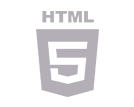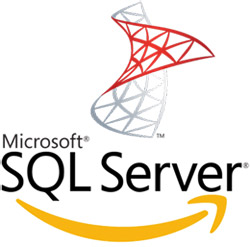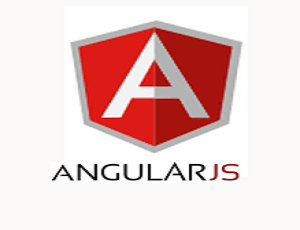-
 .NET Certified
.NET Certified
.NET Framework
.NET Framework (pronounced dot net) is a software framework developed by Microsoft that runs primarily on Microsoft Windows. It includes a large class library named Framework Class Library (FCL) and provides language interoperability (each language can use code written in other languages) across several programming languages.
Programs written for .NET Framework execute in a software environment (in contrast to a hardware environment) named Common Language Runtime (CLR), an application virtual machine that provides services such as security, memory management, and exception handling. (As such, computer code written using .NET Framework is called "managed code".) FCL and CLR together constitute .NET Framework.
-
 PHP
PHP
PHP
PHP: Hypertext Preprocessor (or simply PHP) is a server-side scripting language designed for Web development, but also used as a general-purpose programming language. It was originally created by Rasmus Lerdorf in 1994, the PHP reference implementation is now produced by The PHP Group. PHP originally stood for Personal Home Page, but it now stands for the recursive acronym PHP: Hypertext Preprocessor.
PHP code may be embedded into HTML code, or it can be used in combination with various web template systems, web content management systems, and web frameworks. PHP code is usually processed by a PHP interpreter implemented as a module in the web server or as a Common Gateway Interface (CGI) executable. The web server combines the results of the interpreted and executed PHP code, which may be any type of data, including images, with the generated web page. PHP code may also be executed with a command-line interface (CLI) and can be used to implement standalone graphical applications
-
 HTML5
HTML5
HTML5
HTML 5 (formerly spelled HTML5[a]) is a markup language used for structuring and presenting content on the World Wide Web. It is the fifth and current major version of the HTML standard, and subsumes XHTML. It currently exists in two standardized forms. HTML 5.2 Recommendation by the World Wide Web Consortium (W3C, a broad coalition of organizations), intended primarily for Web content developers; and HTML Living Standard by WHATWG (a small consortium of four browser vendors), intended primarily for browser developers, though it also exists in an abridged Web developer version. There are minor conflicts between the two groups' specifications.
HTML 5 includes detailed processing models to encourage more interoperable implementations; it extends, improves and rationalizes the markup available for documents, and introduces markup and application programming interfaces (APIs) for complex web applications. For the same reasons, HTML 5 is also a candidate for cross-platform mobile applications, because it includes features designed with low-powered devices in mind.
-
 CSS3
CSS3
CSS3
CSS is designed to enable the separation of presentation and content, including layout, colors, and fonts. This separation can improve content accessibility, provide more flexibility and control in the specification of presentation characteristics, enable multiple web pages to share formatting by specifying the relevant CSS in a separate .css file, and reduce complexity and repetition in the structural content
Separation of formatting and content also makes it feasible to present the same markup page in different styles for different rendering methods, such as on-screen, in print, by voice (via speech-based browser or screen reader), and on Braille-based tactile devices. CSS also has rules for alternate formatting if the content is accessed on a mobile device
-
 MVC
MVC
MVC
Model-view-controller is an architectural pattern commonly used for developing user interfaces that divides an application into three interconnected parts. This is done to separate internal representations of information from the ways information is presented to and accepted from the user. The MVC design pattern decouples these major components allowing for efficient code reuse and parallel development.
Traditionally used for desktop graphical user interfaces (GUIs), this architecture has become popular for designing web applications and even mobile, desktop and other clients. Popular programming languages like Java, C#, Ruby, PHP have MVC frameworks that are used in web application development straight out of the box.
-
 MySQL
MySQL
MySQL
MySQL is a central component of the LAMP open-source web application software stack (and other "AMP" stacks). LAMP is an acronym for "Linux, Apache, MySQL, Perl/PHP/Python". Applications that use the MySQL database include: TYPO3, MODx, Joomla, WordPress, Simple Machines Forum, phpBB, MyBB, and Drupal. MySQL is also used in many high-profile, large-scale websites, including Google.
MySQL is written in C and C++. Its SQL parser is written in yacc, but it uses a home-brewed lexical analyzer. MySQL works on many system platforms, including AIX, BSDi, FreeBSD, HP-UX, eComStation, i5/OS, IRIX, Linux, macOS, Microsoft Windows, NetBSD, Novell NetWare, OpenBSD, OpenSolaris, OS/2 Warp, QNX, Oracle Solaris, Symbian, SunOS, SCO OpenServer, SCO UnixWare, Sanos and Tru64. A port of MySQL to OpenVMS also exists.
-
 SQL Server
SQL Server
SQL Server
Microsoft SQL Server is a relational database management system developed by Microsoft. As a database server, it is a software product with the primary function of storing and retrieving data as requested by other software applications-which may run either on the same computer or on another computer across a network (including the Internet).
SQL Server Standard edition includes the core database engine, along with the stand-alone services. It differs from Enterprise edition in that it supports fewer active instances (number of nodes in a cluster) and does not include some high-availability functions such as hot-add memory (allowing memory to be added while the server is still running), and parallel indexes.
-
 jQuery
jQuery
jQuery
jQuery's syntax is designed to make it easier to navigate a document, select DOM elements, create animations, handle events, and develop Ajax applications. jQuery also provides capabilities for developers to create plug-ins on top of the JavaScript library. This enables developers to create abstractions for low-level interaction and animation, advanced effects and high-level, themeable widgets. The modular approach to the jQuery library allows the creation of powerful dynamic web pages and Web applications.
jQuery also provides a paradigm for event handling that goes beyond basic DOM element selection and manipulation. The event assignment and the event callback function definition are done in a single step in a single location in the code. jQuery also aims to incorporate other highly used JavaScript functionality (e.g. fade ins and fade outs when hiding elements, animations by manipulating CSS properties).
-
 AngularJS
AngularJS
AngularJS
The AngularJS framework works by first reading the HTML page, which has additional custom tag attributes embedded into it. Angular interprets those attributes as directives to bind input or output parts of the page to a model that is represented by standard JavaScript variables. The values of those JavaScript variables can be manually set within the code, or retrieved from static or dynamic JSON resources.
AngularJS is the frontend part of the MEAN stack, consisting of MongoDB database, Express.js web application server framework, Angular.js itself, and Node.js server runtime environment.

